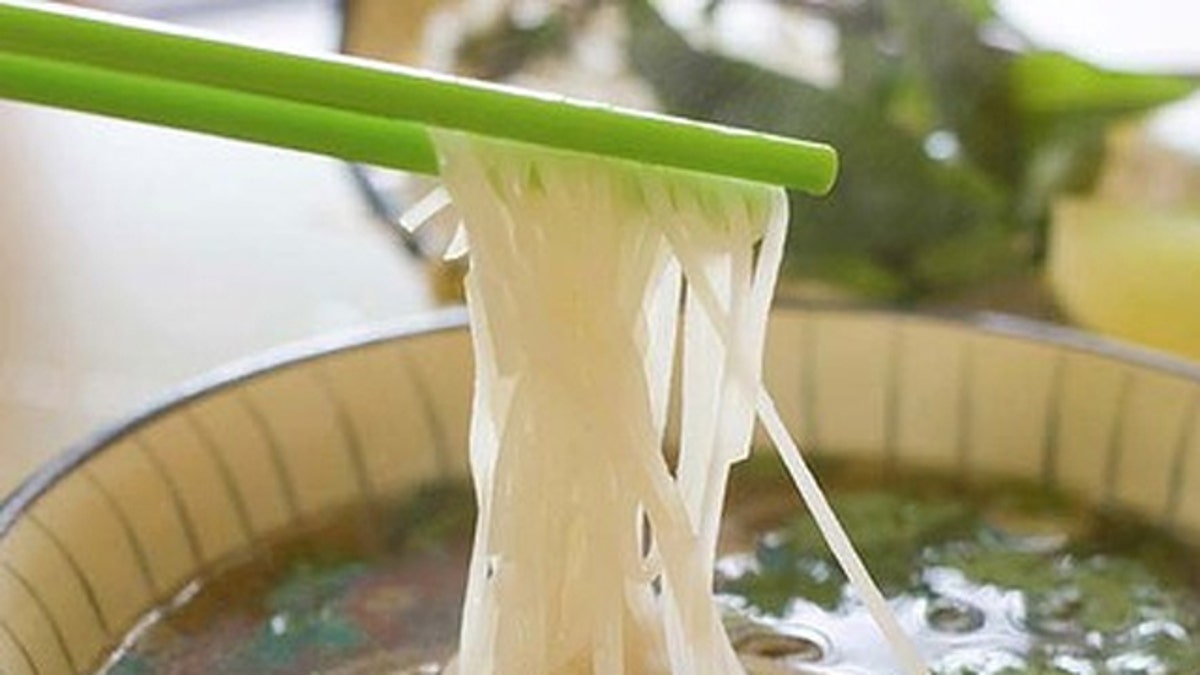
If your background isn’t at least in part Chinese, and New Year’s to you was celebrated a month-plus ago, then you’re missing out on one of the coolest annual food celebrations there is.
Chinese New Year -- which runs until Feb. 6., isn’t just about festive parades and flamboyant costumes. At its core, it’s about gathering the family ‘round the table—and eating until you can eat no more.
But Chinese or no, it’s pretty easy to incorporate a little New Year’s good fortune and positive symbolism onto your own dishes—because hey, who can’t use a little luck? And if it tastes good and brings the kids to the table, all the better.
“Chinese New Year for all Chinese is very much like Thanksgiving in the United States, where no matter where you are, you go home.
Whether you’re in Singapore, or overseas, the Chinese New Year is very, very much about family and coming back together,” explains chef Larry Reutens, owner of New York’s Masak in the East Village.
Ruetens, who emigrated to the United States from Singapore eight years ago, opened his cozy, rustic-chic little neighborhood eatery at the tail end of August 2011.
Reutens, who cut his chops at Gotham’s venerable Aquavit and the Tasting Room, brings his well-honed fine-dining sophisticated skills to the menu here, adding in some riffs that are less Singaporean and more modern-day epicurean in nature.
But still, there was no way Reutens would miss out on introducing New Yorkers to the delights of the food traditions he holds near and dear.
The New Year, based on the Chinese lunar and solar-guided calendar, begins with the first new moon in January and ends at the next full moon, making it a full-on two-week celebration.
And while there are many ways the New Year is traditionally rung in, it’s the meaning of the ingredients in the traditional foods that are a big, delicious draw -- and it’s that first day of the two-week celebration that’s the big one where food truly matters.
The dishes served aren’t just about sustenance, though—there’s nary a plate on the table that doesn’t have some sort of symbol or meaning.
“The entire Chinese New Year food tradition is so linked to a lot of these symbols, be it the kind of food, the color of food, or the name of food,” says Reutens.
At Masak, Reutens created a special, dear-to-his-heart, multi-course menu that riffs on tradition. Like fried thin slices of arrowroot, bright orange-gold in color and addictively crunchy, with a nutty flavor that makes potato chips seem like greasy kid stuff.
But more than a great pre-meal appetite-whetter, it’s their symbolism—their shape and hue are meant to recall an image of gold coins—that makes them part of the New Year’s meal. Long, uncut noodles are meant to conjure long life, as do the bamboo mushrooms found in Reuten’s meal starter—a warm, delicately savory soup with the Asian fungi, crab, and dried scallops, which are meant to represent the opening of new horizons.
For the main event, Reuten chose to pay homage to the traditional special-occasion fowl course—quail stuffed with rice, a hard-boiled, salted duck egg, and lotus seeds. The result: a dish that not only packs a lot of flavor, but a whole lot of symbolism, too.
The egg represents fertility and a blessing of many children; the rice represents abundance, luck, and wealth. “In Chinese families, meat is a special kind of thing. The traditional diet has a lot of vegetables and very little meat – it’s a splurge to get meat, so chicken and duck are reserved for special occasions. For the New Year, you want to show you have enough, so families often splurge on it.”
As for the lotus seeds, they, too, punctuate a special wish for the coming days. Reutens points out that in the Chinese language, many characters and words sound alike, and therefore find special meaning on the New Year’s table. “Lotus seed in Chinese is lien tze – which sounds very close to the word or phrase for a having a child every year. So the lotus seeds infer a big family.”
Shrimp is another popular protein on the holiday table, too, as much for its sweet, pink meat as its believed ability to coax happiness into the home through the sound of the word.
In Chinese, shrimp is pronounced, ‘ha,’ Reuten says, which sounds, of course, a lot like laughter. Having shrimp is meant to bring joy into your home and your life. Which, of course, if you’ve got everyone sitting down, not arguing, and digging in, is a feat of luck you’ve already accomplished.
“It’s the one day of the year where the extended family comes together and has a huge feast. That dinner, which is traditionally on New Year’s Eve or New Year’s Day, is called the Reunion dinner.
Over the years, we would associate certain foods with that meal and those feelings of everyone coming together. It makes you feel even more attached to those foods, and to each other. It’s a very happy time of year -- a celebratory time of year!” And a pretty delectable one, too.
